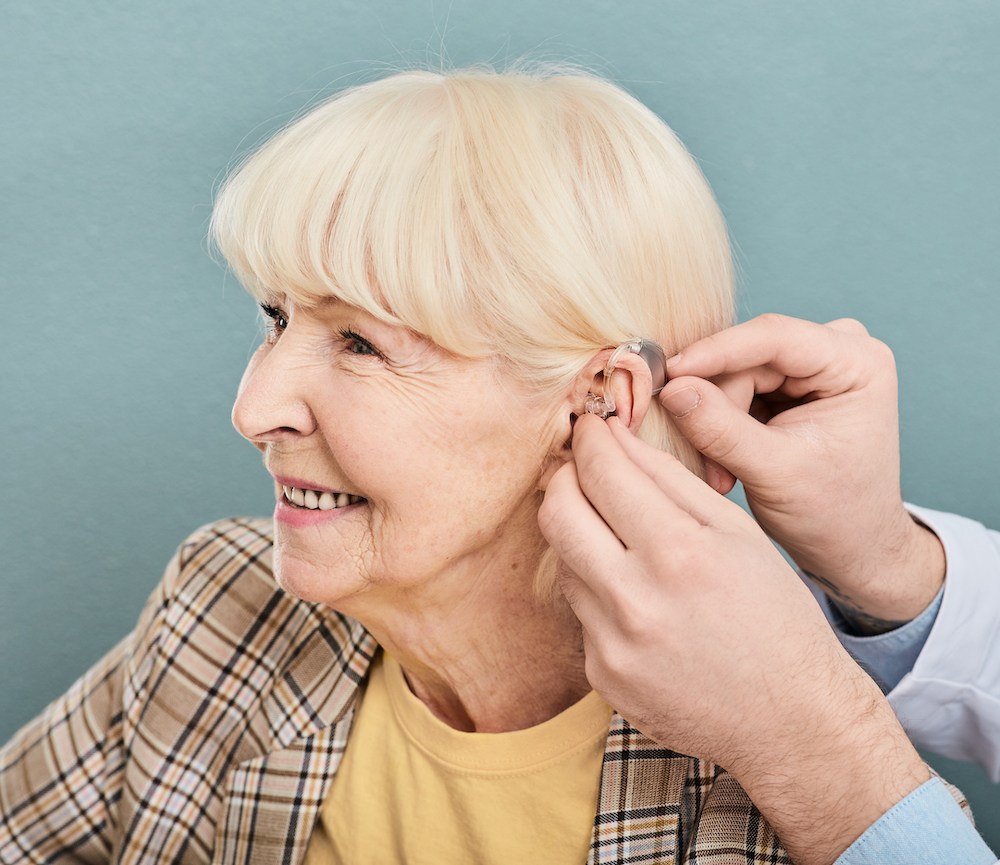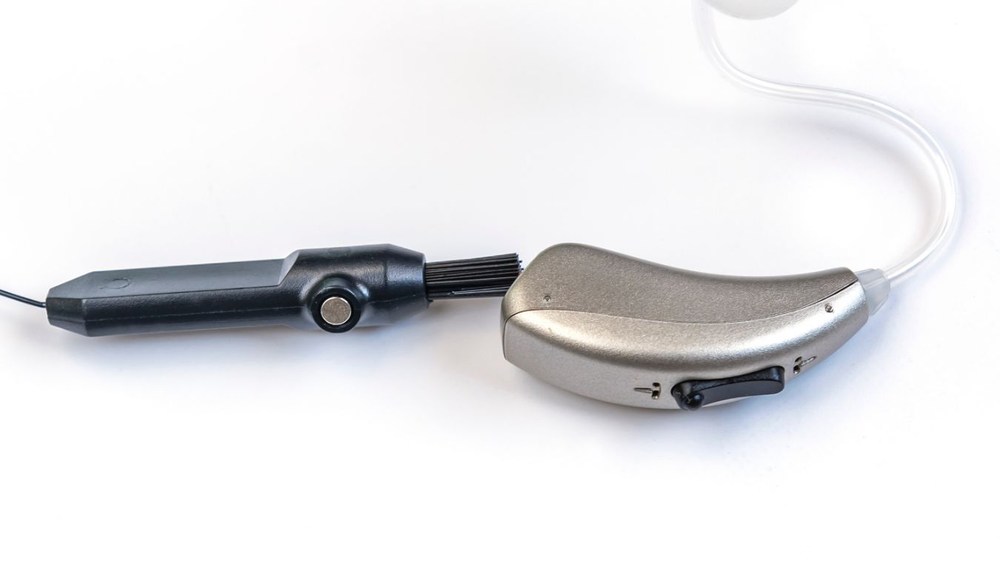Hearing Aid Innovations: What’s New in 2025?
Hearing aid technology has come a long way in recent years, and 2025

By: admin | July 29, 2025
Helping children with hearing loss isn’t just about making smaller versions of adult hearing aids. Kids’ ears are constantly growing and changing, which means their hearing solutions need to grow with them. What works for a toddler who’s just learning to talk is completely different from what a teenager needs to keep up with friends and schoolwork. Children also tend to be harder on their devices, whether they’re crawling around as babies or playing sports as they get older, so their hearing solutions need to be built differently too.
The field of pediatric hearing care has come a long way in recent years. We now have better ways to test hearing in babies who can’t tell us what they’re experiencing, and hearing devices that can adapt as children develop. There are also more options for kids who need something beyond traditional hearing aids, giving families hope when they might not have had many choices before. These advances mean that children with hearing loss today have much better opportunities to develop speech and language skills, succeed in school and participate fully in childhood activities that help them grow and learn.
Finding hearing loss early in children has a big impact on their growth and learning. Early identification means getting the right support in place before delays take hold, helping children develop strong speech, language and communication skills. When hearing loss goes unnoticed, it can slow a child’s ability to understand and use language, making it harder to keep up in the classroom. This can affect reading development, following instructions and participating in lessons that rely on listening.
Social and emotional development can also be affected when hearing challenges make it difficult to join in conversations or play with other children. Feeling left out or misunderstood can lead to frustration, lower confidence and even withdrawal from group activities. Recognizing hearing loss early gives families and teachers the chance to adjust how they communicate, provide extra support and help children feel included. This kind of early action can make a lasting difference in a child’s ability to learn, make friends and feel confident in daily life.
Hearing loss can affect how children develop clear speech and understand language. Missing important sounds or words may slow down how they learn to talk and read. When children have trouble hearing, following lessons at school or joining group activities can become difficult. This sometimes leads to feeling left out or having trouble making friends.
With the right hearing aids and assistive devices, many of these obstacles can be managed. Early support helps children build strong communication skills and stay engaged with classmates and teachers.
Traditional hearing aids, especially behind-the-ear (BTE) models, are a reliable and widely used option for children with hearing loss. These devices are built to be durable enough for daily wear and the active lifestyles of children. Their design makes them easy to clean and maintain, and they can be reprogrammed to match a child’s changing hearing needs as they grow. This flexibility is especially valuable because it means families do not need to replace the entire device as often, and only certain parts may need updates or changes over time.
BTE hearing aids also support learning by connecting to classroom technology like remote microphones or tablet-based systems, helping children hear their teachers more clearly even in noisy settings. Many models are equipped with features that reduce background noise, making speech easier to understand during group activities or on the playground. For most children with mild-to-moderate hearing loss, these hearing aids offer dependable support both at home and in school. For children with more significant hearing challenges, a specialist may discuss additional options tailored to their needs.
Digital sound processing has improved how well children can hear with modern devices. This technology quickly separates speech from background noise, allowing your child to focus on voices even in busy places like classrooms or playgrounds. Many digital hearing aids adjust automatically to different environments, making listening easier without constant manual changes.
These advancements help children follow conversations and instructions throughout the day, supporting learning, socializing and confidence in group settings. Our team can explain which digital options best match your child’s needs.
Wireless features in hearing aids make a big difference for children both in the classroom and at home. Many modern devices can connect directly to microphones used by teachers, sending the teacher’s voice clearly to the child’s ears even in a noisy classroom. This helps kids follow lessons more easily and stay engaged without struggling to pick out speech from background sounds. At home, wireless connections allow hearing aids to pair with TVs, tablets or smartphones, making it simpler for children to enjoy shows, educational apps or video calls with family.
These features give children more freedom to participate fully in the activities they enjoy and the learning they need. By making sound clearer and more direct, wireless technology reduces listening effort, helping kids focus better and feel more confident. Parents and teachers can also use compatible accessories to support communication in different settings. Overall, these connections make daily life smoother and more accessible, giving children more opportunities to learn, play and interact with the world around them.
Rechargeable batteries have made hearing aids more convenient for busy children and their families. Instead of frequently changing small batteries, you can charge the device overnight, similar to charging a phone. This routine is simple to build into daily life and helps ensure the hearing aids are always ready for the next day.
Many rechargeable hearing aids provide power for an entire day on a single charge, allowing your child to focus on learning and play without interruption. Charging is simple and safe, with most devices using easy-to-use docks or cases that keep the devices secure while they power up. Parents also benefit from not having to keep track of spare batteries or worry about children handling small parts that could be easily lost or pose a choking risk. Rechargeable options also reduce waste from disposable batteries, offering an environmentally friendly choice for families who want to minimize their impact.
Smartphone apps now allow families and our team to make quick adjustments to a child’s hearing aids without needing an office visit. These apps help change settings, check battery life and connect with remote support for questions or troubleshooting. This makes it easier to keep your child’s devices working well, especially during busy weeks or while traveling when scheduling an appointment can be challenging.
Some families may need help learning how to use these new apps. Our team can guide you step-by-step and answer any questions so you feel comfortable managing your child’s hearing care from home. With this technology, small changes can be made in real time to suit different environments, whether your child is in the classroom, at the playground or at home. This level of control helps families feel more confident in supporting their child’s hearing needs every day.
Children are often active, so water resistant hearing aids are designed to handle splashes, sweat and rainy days. These devices offer protection against moisture during sports or outdoor play, giving parents peace of mind knowing their child’s hearing aids can keep up with their lifestyle. Whether it is running in the park, playing soccer or simply getting caught in unexpected weather, water resistant designs help keep hearing aids working reliably throughout the day.
This added durability means fewer worries about accidental damage during normal childhood activities. Parents can feel more comfortable letting kids participate fully without constantly reminding them to be careful of their devices. Water resistant materials and seals help protect sensitive components from everyday moisture, reducing the risk of malfunctions and the need for frequent repairs.
Assistive listening devices are helpful during group activities like classroom discussions, assemblies or team sports. These tools send sound directly to your child’s hearing aids, making voices clearer and reducing background noise.
When children can hear instructions and conversations more easily, they feel more included and confident in group settings. Ask our team about assistive listening options that can help your child participate fully in every activity.
Bone conduction devices offer an alternative for children who cannot use traditional hearing aids. These devices send sound through the bones of the skull directly to the inner ear, which can be helpful for certain types of hearing loss or problems with the outer or middle ear.
Many bone conduction devices are comfortable and easy for kids to wear during daily activities. They can be worn on a soft headband or attached behind the ear, providing flexibility as your child grows. Some families consider bone conduction devices when regular hearing aids are not suitable due to ear shape, chronic infections or other medical reasons.
For children with severe or profound hearing loss who do not benefit enough from traditional hearing aids or assistive devices, cochlear implants may be discussed by a doctor. Cochlear implants are special devices that may be considered after trying other solutions and determining that hearing aids do not provide enough access to sound for language development and communication.
It is common to have questions or concerns about this step, especially since it can feel like a big decision for families. Parents often want to know what surgery involves, how long it takes for a child to adjust and what kind of support and therapy will be needed afterward. Talking openly with specialists can help families understand the process, set realistic expectations and feel more confident about making choices that support their child’s growth. This collaborative approach ensures that the child’s needs, abilities and family goals all guide the plan for care and hearing development.
As children grow, their ears and hearing needs change. Hearing aids and other devices need regular adjustments to keep up. Modern fitting methods make updates simple and comfortable, ensuring your child receives the best possible sound through each stage of development.
Families can expect regular check-ups to measure changes in ear shape and size, updates to ear molds or device settings for a secure fit, new programming as speech and listening needs evolve and guidance on when a larger or more advanced device may be needed. Our team will work with you at every visit to keep your child’s hearing care up-to-date.
When exploring hearing solutions for your child, asking the right questions can help you make informed decisions and feel more confident about the care they receive. It is important to understand how different devices or treatments will support your child’s specific type and level of hearing loss. You might want to know how a hearing aid or other technology will help with speech and language development, participation in school and daily communication.
Consider asking questions like:
You may also want to ask about the support available for your child and family, including training on using new devices and ongoing care. Discussing these topics openly with your audiologist ensures you have a clear picture of what to expect and helps you choose solutions that truly fit your child’s needs and your family’s goals.
Supporting children with hearing loss means paying attention to how their needs change as they grow. From the first steps in learning to speak to keeping up with schoolwork and friendships, each stage brings new challenges and opportunities. Modern pediatric hearing care is designed to keep up with those changes, offering solutions that are durable, adjustable and suited to the way children move through the world. By understanding what makes kids’ hearing needs unique, we can help them build strong communication skills and confidence that carry them forward.
If you want to learn more about how we can help your child hear and thrive at every age, contact Audiology and Hearing Aid Center by calling one of our convenient locations in Berlin, Oshkosh, Neenah, Wautoma, Menasha or Appleton, WI at (920) 486-6922. We’re here to answer your questions, talk through your options and find solutions that fit your family. Together, we can support your child’s growth and help them enjoy all the experiences that make childhood special.

Hearing aid technology has come a long way in recent years, and 2025
By: admin | October 20, 2025

Helping children with hearing loss isn’t just about making smaller
By: admin | July 29, 2025

Your hearing aids already do so much more than just help you hear better
By: admin | June 20, 2025
